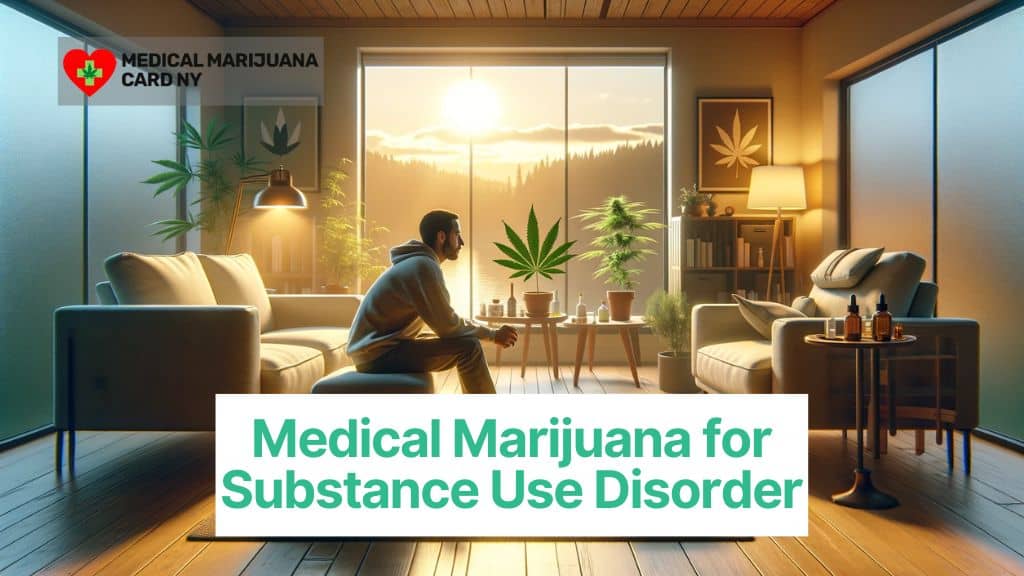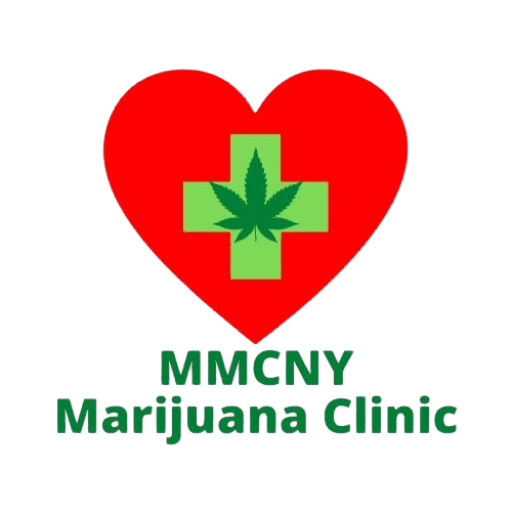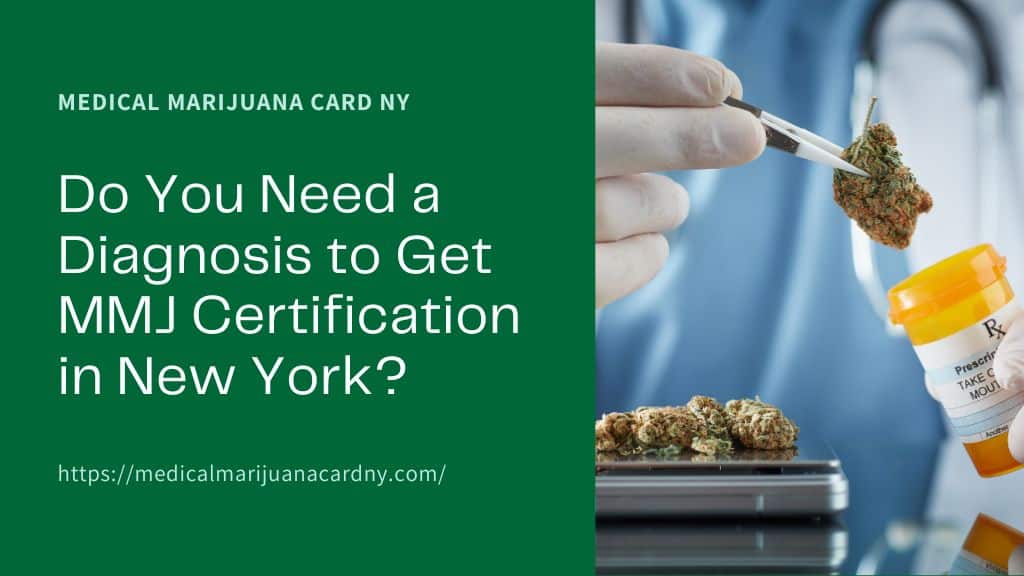Substance Use Disorder (SUD) is a complex and often misunderstood condition, one that challenges countless individuals and families. In New York, as in many parts of the world, the traditional approaches to treating SUD have often fallen short, leaving many in search of alternative therapies. Enter medical marijuana, a topic that has sparked considerable debate and hope in equal measure. This blog delves deep into the role of medical marijuana in the context of SUD, exploring its potential as a groundbreaking treatment option.
In the bustling streets of New York, where the fast-paced lifestyle often brushes the struggles of SUD under the carpet, we aim to shed light on how medical marijuana can offer a ray of hope to those engulfed in the darkness of addiction. Our focus is not just on the ‘high’ but on the ‘how’ – how can medical marijuana aid in recovery, what does the research say, and importantly, how is it being integrated into the existing healthcare framework of New York?
Through patient stories, expert opinions, and scientific insights, this blog offers a comprehensive view, challenging the stigma and opening a dialogue on this vital issue. Whether you’re a patient, caregiver, medical professional, or simply an intrigued reader, join us on this enlightening journey. Let’s explore the potential of medical marijuana in transforming the approach to Substance Use Disorder treatment.
Table of Contents
Toggle- What Is Substance Use Disorder?
- How Is Substance Use Disorder Diagnosed?
- What Are Common Treatments for Substance Use Disorder?
- Why Is Personalized Treatment Important in Substance Use Disorder?
- How Can Medical Marijuana Aid in Treating Substance Use Disorder?
- What Does Research Say About Medical Marijuana and Substance Use Disorder?
- What Is the Legal Status of Medical Marijuana in New York for Substance Use Disorder?
- How Do New York Laws Compare to Other States in Terms of Medical Marijuana for Substance Use Disorder?
- Who Can Prescribe Medical Marijuana for Substance Use Disorder in New York?
- Where Can Patients Obtain Medical Marijuana in New York?
- Who Has Benefited from Medical Marijuana for Substance Use Disorder in New York?
- Why Do Some Patients Opt for Medical Marijuana Over Traditional Treatments?
- What Are the Potential Risks and Benefits of Using Medical Marijuana for Substance Use Disorder?
- How Do Healthcare Providers Assess the Efficacy of Medical Marijuana in Treating Substance Use Disorder?
- Conclusion
What Is Substance Use Disorder?
Substance Use Disorder (SUD) is a medical condition characterized by an uncontrolled use of substances despite harmful consequences. It encompasses a range of behaviors from mild to severe, often associated with dependence on drugs, alcohol, or other substances. This disorder fundamentally alters the brain’s chemistry, impacting the user’s behavior, decision-making, and overall health. SUD can significantly affect an individual’s ability to function in daily life, including in personal relationships, work, or school.
How Is Substance Use Disorder Diagnosed?
Diagnosing Substance Use Disorder is a multi-faceted process, involving comprehensive evaluations by healthcare professionals. The diagnosis typically follows criteria outlined in the Diagnostic and Statistical Manual of Mental Disorders (DSM-5), which includes factors such as:
- Patterns of Use: Frequency and amount of substance use.
- Impact on Daily Life: How substance use affects responsibilities at work, home, or school.
- Control Over Use: Persistent desire or unsuccessful efforts to cut down or control substance use.
- Tolerance and Withdrawal: Increased tolerance to the substance and withdrawal symptoms when not using.
A thorough assessment includes a medical examination, psychological evaluation, and a review of the patient’s medical, psychiatric, and social history.
What Are Common Treatments for Substance Use Disorder?
Treatment for Substance Use Disorder is often a long-term process and can include various approaches:
- Behavioral Therapies: These are the most common forms of SUD treatment and include cognitive-behavioral therapy, motivational interviewing, and contingency management. Behavioral therapies help modify patients’ attitudes and behaviors related to substance use, increase healthy life skills, and persist with other forms of treatment.
- Medication-Assisted Treatment (MAT): MAT combines medications with counseling and behavioral therapies to treat substance use disorders. It’s often used to treat opioid addiction but can be used for other substances as well.
- Support Groups and Counseling: Support groups like Alcoholics Anonymous (AA) or Narcotics Anonymous (NA) provide peer support for individuals struggling with addiction. Individual or group counseling can also be effective.
- Detoxification and Rehabilitation Programs: Detox programs provide medical supervision for safely withdrawing from substances. Rehabilitation programs can be inpatient or outpatient and offer structured treatment programs.
- Dual Diagnosis Treatment: Many individuals with SUD also have co-occurring mental health disorders. Dual diagnosis treatment addresses both the substance use disorder and the mental health condition concurrently.
Why Is Personalized Treatment Important in Substance Use Disorder?
Personalized treatment is crucial in managing Substance Use Disorder (SUD) due to the unique nature of each individual’s condition. SUD varies widely in substances used, patterns of abuse, and the presence of co-occurring mental health conditions.
Personalized treatment approaches are designed to meet the specific needs of each individual, considering factors like the type of substance used, the severity of the disorder, the presence of any co-occurring disorders, and individual lifestyle factors. This approach helps in:
- Addressing Individual Needs: Tailored treatments can effectively address the specific challenges and needs of each patient, increasing the likelihood of successful recovery.
- Managing Co-occurring Disorders: Many individuals with SUD also suffer from mental health conditions. Personalized treatment can address both SUD and any co-occurring disorders concurrently, leading to better overall outcomes.
- Improving Engagement and Compliance: Customized treatment plans can increase a patient’s engagement and compliance with the treatment process.
How Can Medical Marijuana Aid in Treating Substance Use Disorder?
Medical marijuana has been considered as a potential treatment for SUD, particularly in managing withdrawal symptoms and reducing cravings. The properties of cannabinoids, such as CBD and THC, may offer therapeutic benefits in SUD treatment:
- Alleviating Withdrawal Symptoms: Medical marijuana may help alleviate withdrawal symptoms associated with certain substance dependencies, making the recovery process more manageable.
- Reducing Cravings: Some studies suggest that medical marijuana can reduce cravings for other more harmful substances.
- Alternative Pain Management: For individuals with SUD related to opioid painkillers, medical marijuana can serve as an alternative pain management solution.
What Does Research Say About Medical Marijuana and Substance Use Disorder?
Research on medical marijuana’s role in treating SUD is mixed and still evolving. Some studies indicate that medical marijuana may help in treating opioid use disorder (OUD) by reducing opioid intake and alleviating withdrawal symptoms. However, there are concerns about the risk of developing cannabis use disorder (CUD) among medical marijuana users. It is important to note that these findings are still preliminary and more comprehensive studies are needed to fully understand the benefits and risks of using medical marijuana in treating SUD.
A study found that states allowing medical cannabis for OUD saw a significant increase in dispensaries promoting cannabis for this indication. However, this has raised concerns about the potential of unsubstantiated medical claims and the risk of individuals foregoing evidence-based treatments for OUD.
What Is the Legal Status of Medical Marijuana in New York for Substance Use Disorder?
As of 2023, medical marijuana is legally available in New York State for various conditions, including Substance Use Disorder (SUD). Under the New York State Medical Cannabis Program, healthcare providers can certify patients for medical cannabis if deemed appropriate. This certification allows patients to use their medical cannabis certification, either a paper copy or on a smart device, along with a government-issued photo ID, at any licensed New York State medical dispensary to purchase cannabis products.
How Do New York Laws Compare to Other States in Terms of Medical Marijuana for Substance Use Disorder?
New York’s approach to medical marijuana for SUD is progressive compared to many other states. While some states have yet to recognize SUD as a qualifying condition for medical cannabis, New York’s inclusion of SUD in its list of qualifying conditions demonstrates a broader acceptance of medical marijuana’s potential therapeutic benefits. States vary widely in their medical marijuana policies, with some having more restrictive lists of qualifying conditions and stricter regulations on prescribing and dispensing.
Who Can Prescribe Medical Marijuana for Substance Use Disorder in New York?
In New York, state-approved healthcare providers who have completed an OCM-approved medical use of cannabis course can certify patients for medical cannabis. This includes physicians, nurse practitioners, and physician assistants licensed to prescribe controlled substances in New York. These healthcare providers must undergo training that covers various aspects of medical cannabis use, including pharmacology, contraindications, side effects, dosing, and the legal aspects of prescribing cannabis.
Where Can Patients Obtain Medical Marijuana in New York?
Patients certified for medical marijuana in New York can obtain cannabis products from licensed medical dispensaries across the state. After receiving MMJ certification from a healthcare provider, patients can use this certification to purchase medical cannabis at any registered dispensary. New York State has a system in place to ensure the availability of safe, lab-tested medical cannabis products for patients through these dispensaries.
Who Has Benefited from Medical Marijuana for Substance Use Disorder in New York?
In New York, patients with Substance Use Disorder (SUD) have found medical marijuana to be beneficial in various ways. Medical marijuana has been particularly helpful in managing withdrawal symptoms, reducing cravings, and providing an alternative to more addictive substances. This approach has been integral in New York’s strategy to combat the opioid crisis. The New York State Medical Cannabis Program has enabled thousands of New Yorkers to access medical cannabis safely and legally, thereby finding relief from pain and other conditions related to SUD.
Why Do Some Patients Opt for Medical Marijuana Over Traditional Treatments?
Some patients with SUD choose medical marijuana over traditional treatments for several reasons:
- Reduced Side Effects: Compared to some traditional SUD treatments, medical marijuana may have fewer or more manageable side effects.
- Effectiveness in Symptom Management: For some patients, medical marijuana has proven effective in managing symptoms like pain, anxiety, and insomnia, which can be linked to SUD.
- Avoidance of More Addictive Substances: Patients may opt for medical marijuana as a less addictive alternative to opioids or other prescription medications.
What Are the Potential Risks and Benefits of Using Medical Marijuana for Substance Use Disorder?
Benefits:
- Pain Management: Effective in managing chronic pain without the risks associated with opioid painkillers.
- Reduced Withdrawal Symptoms: Helps alleviate withdrawal symptoms associated with certain drugs, making the recovery process more tolerable.
Risks:
- Risk of Developing Cannabis Use Disorder: There’s a risk of dependency or abuse of marijuana itself.
- Potential Health Risks: Includes respiratory issues from smoking, potential for temporary anxiety or paranoia, and impaired reaction times.
- Unpredictable Effects: The effects of cannabis can vary greatly depending on the strain and method of consumption.
How Do Healthcare Providers Assess the Efficacy of Medical Marijuana in Treating Substance Use Disorder?
Healthcare providers assess the efficacy of medical marijuana in treating SUD through:
- Clinical Evaluation: Monitoring patients’ responses to treatment, including changes in symptoms and overall well-being.
- Ongoing Communication: Regular discussions with patients about their experiences, benefits, and side effects.
- Adjustment of Treatment Plans: Providers may adjust dosages or strains based on patient responses and emerging research findings.
The New York State Medical Cannabis Program plays a crucial role in ensuring that patients receive appropriate guidance and safe access to medical marijuana. It requires that all dispensaries have pharmacists on-site to assist patients in selecting the right product, thereby ensuring that medical marijuana is used effectively and responsibly in the treatment of SUD.
Conclusion
In conclusion, the exploration of medical marijuana as a treatment for Substance Use Disorder (SUD) in New York presents a landscape filled with both potential and caution. With evolving research and changing state policies, medical marijuana emerges as a possible alternative or adjunctive treatment, offering hope for those grappling with the complexities of SUD. However, this hope is tempered by the need for further scientific validation and cautious application, particularly considering the risks associated with cannabis use disorder.
As New York continues to navigate this delicate balance, the focus remains on personalized treatment approaches, ensuring that each individual’s journey towards recovery is met with the most effective and safe therapeutic options. This blog serves as a gateway to understanding these nuanced perspectives, encouraging readers to stay informed and engaged in the ongoing discourse surrounding medical marijuana and its role in treating SUD in New York.
Resources
https://www.ncbi.nlm.nih.gov/books/NBK538131/
https://norml.org/laws/medical-laws/new-york-medical-marijuana-law
https://cannabis.ny.gov/medical-cannabis
https://www.cdc.gov/marijuana/health-effects/addiction.html
https://www.ncbi.nlm.nih.gov/pmc/articles/PMC2848643/
https://www.sju.edu/news/study-examines-benefits-using-medical-marijuana-treat-opioid-addiction





